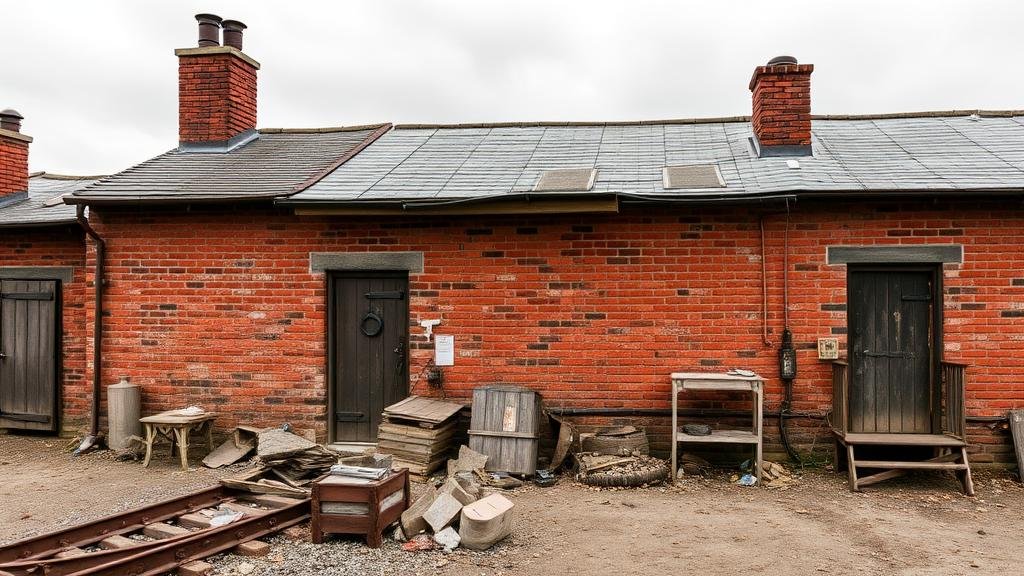Recovering Coins and Relics in Historic Factory Worker Housing Areas
Recovering Coins and Relics in Historic Factory Worker Housing Areas
The recovery of coins and relics in historic factory worker housing areas offers valuable insights into the socio-economic conditions of the time, as well as the daily lives of the individuals who inhabited these spaces. This article explores the methodologies, historical significance, and modern implications associated with such recoveries, emphasizing the importance of preserving cultural heritage and understanding social history.
Historical Context of Factory Worker Housing
Factory worker housing emerged during the Industrial Revolution as cities expanded rapidly to accommodate a growing workforce. These areas often featured modest homes, many built with the intention of providing affordable living quarters for factory employees. Examples include the textile mill towns of Lowell, Massachusetts, and the coal mining communities in Pennsylvania. The architecture of these homes reflected the economic status and cultural backgrounds of their residents, becoming a rich source of historical and archaeological significance.
Methodologies for Recovery
The recovery of relics and coins in these historic areas typically involves a combination of methodologies that include archaeological excavation, metal detecting, and historical research. Each method has its own strengths and can provide different insights into the lives of former residents.
- Archaeological Excavation: This method involves systematic digging to unearth material culture, including household items and artifacts. Excavations at sites like the Pullman Historic District in Chicago have revealed household artifacts that illuminate the daily lives of workers in the 19th century.
- Metal Detecting: Utilizing metal detectors is a common practice for locating coins and metal artifacts. For example, metal detecting in old factory towns has led to the discovery of currency from various eras, providing clues about trade, economy, and daily purchases.
- Historical Research: Combining physical recovery with documentary research allows archaeologists to understand the context of their findings. Historical records, such as property deeds and census data, can provide narratives that explain the significance of recovered artifacts.
Significance of Coin and Relic Recovery
The artifacts recovered from factory worker housing areas often serve as tangible links to the past. Coins, for instance, can indicate economic activity and trade practices, while household items can reflect the cultural practices of the time. Analysis of recovered items allows researchers to draw connections between economic conditions and social dynamics.
For example, a study conducted in the former worker housing of the Erie Canal in New York identified coins dating back to the mid-1800s alongside personal items such as buttons and toys. This suggests that workers lived lives that were not solely defined by labor but also included elements of family and community life. Such findings humanize historical narratives, allowing contemporary audiences to relate to their ancestors.
Case Studies of Successful Recoveries
Numerous case studies illustrate the successful recovery of coins and relics in historic factory worker housing areas. One notable example is the restoration efforts in the historic mill village of Slatersville, Rhode Island, where archaeologists unearthed a variety of artifacts, including metal buttons, glass bottles, and coins from the late 19th century. The findings provided a deep exploration into the socio-cultural practices, leisure activities, and economic conditions of the area.
Another key example comes from the Andersonville National Historic Site in Georgia, where researchers uncovered kitchenware and personal effects. artifacts recovered highlight not only the economic status of the inhabitants but also their day-to-day struggles and resilience.
Challenges and Ethical Considerations in Recovery
While the recovery of coins and relics serves important educational and historical purposes, it is not without challenges and ethical considerations. The process of excavation can damage sites and disrupt communities, leading to tensions between archeologists and local residents. Plus, there is the concern of ownership and the safeguarding of culturally significant items.
It is vital for researchers to engage with local communities, ensuring that they are both stakeholders and beneficiaries of archaeological efforts. Clear communication regarding the aims and methodologies of recovery efforts can foster trust between archaeologists and community members.
Modern Implications and Applications
Today, the practice of recovering coins and relics from historic factory worker housing areas contributes to a broader understanding of urban historical development and industrialization. These findings can be applied in various ways, from enriching local historical narratives to enhancing educational programs and tourism initiatives.
For example, many towns leverage these artifacts to create exhibits that draw attention to their industrial heritage, providing educational resources for schools and curious tourists alike. Also, recovered items can lead to the establishment of heritage trails, which promote cultural tourism and economic revitalization in historically rich areas.
Actionable Takeaways
- Engaging in fieldwork requires knowledge of legal and ethical standards in archaeological recovery.
- Community involvement is essential in ensuring that the recoveries respect both cultural heritage and local interests.
- Leveraging recovered artifacts can provide unique opportunities for education, tourism, and social cohesion.
To wrap up, the recovery of coins and relics in historic factory worker housing areas not only preserves culture and history but also enriches our understanding of the lives lived in these communities. Such efforts highlight the importance of archaeological work and the valuable stories that relics from the past can tell.



